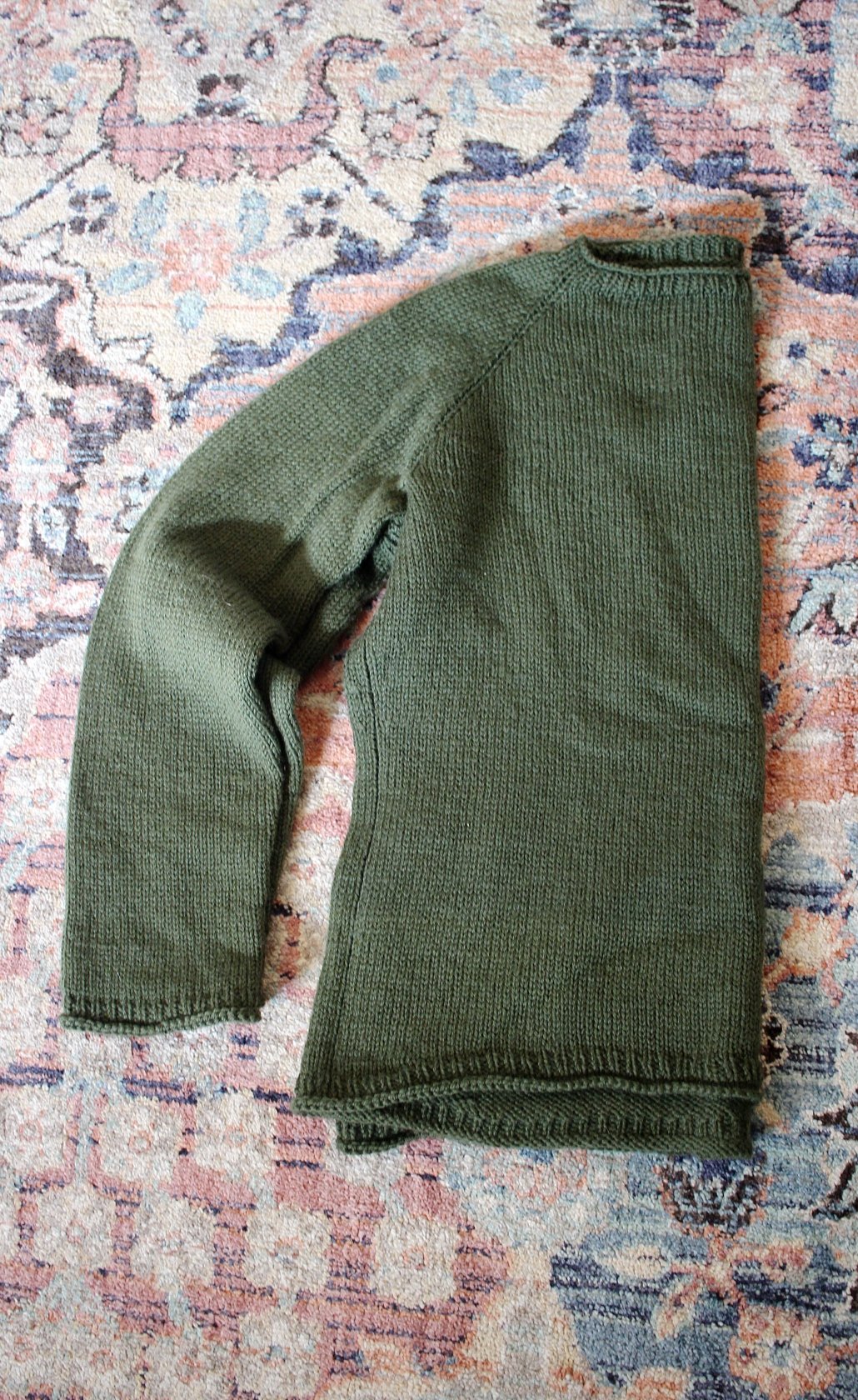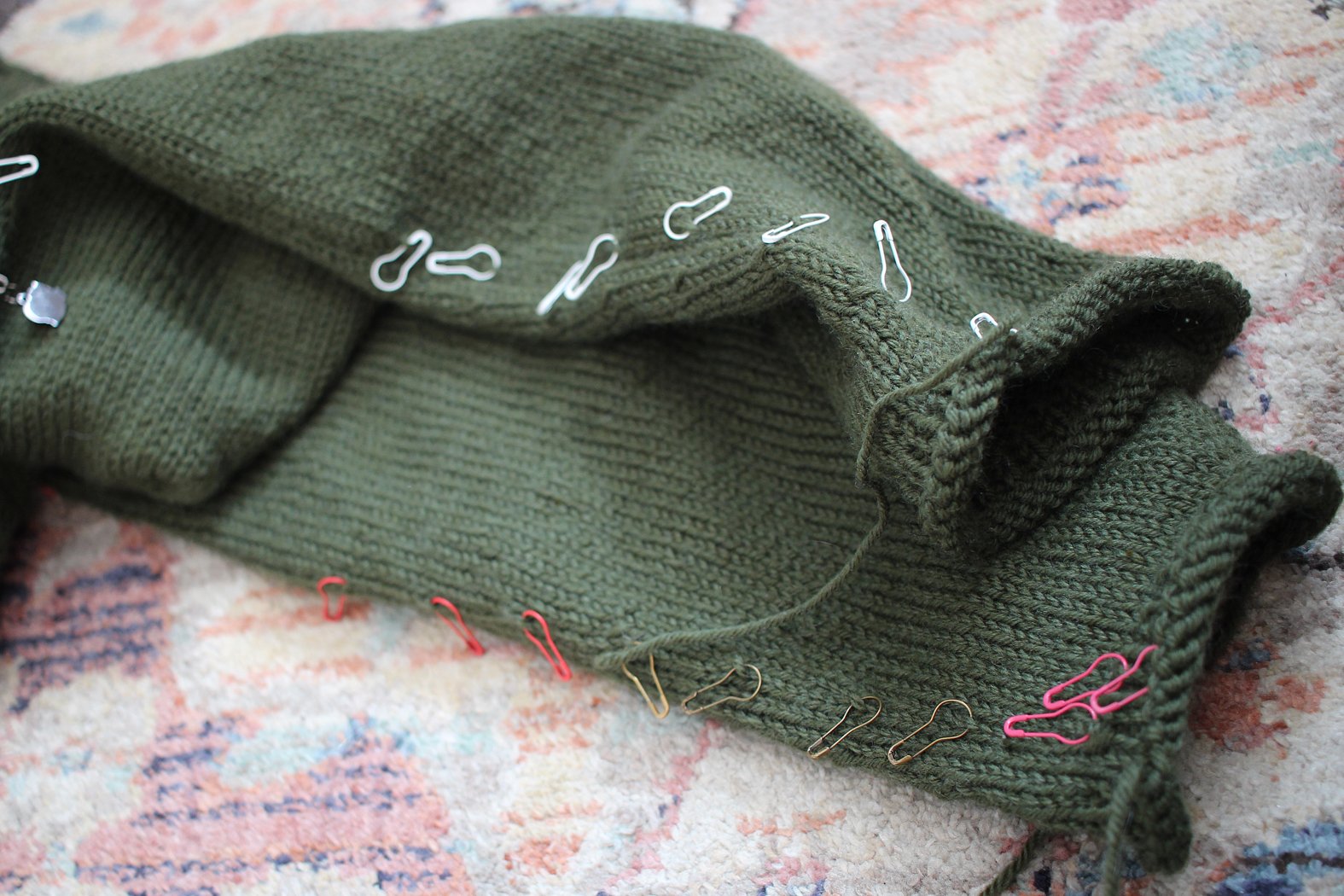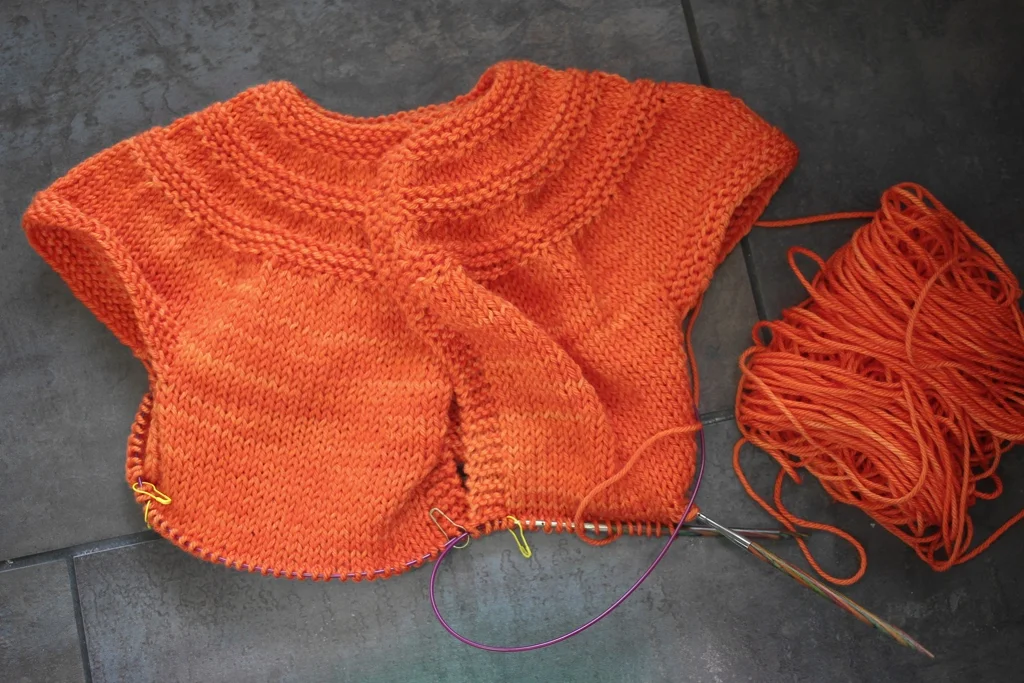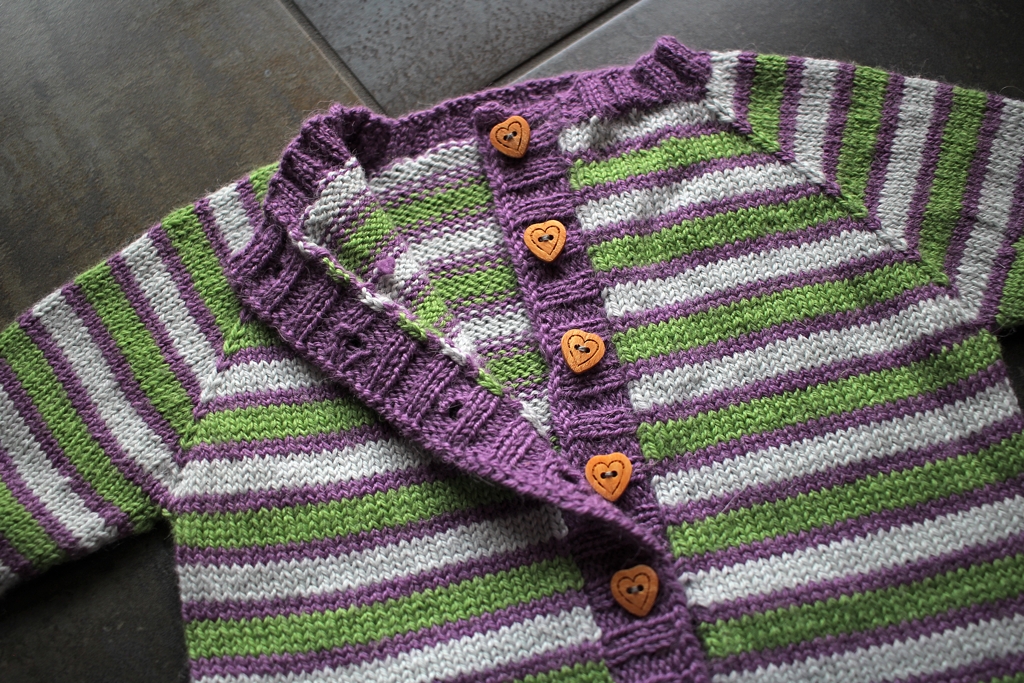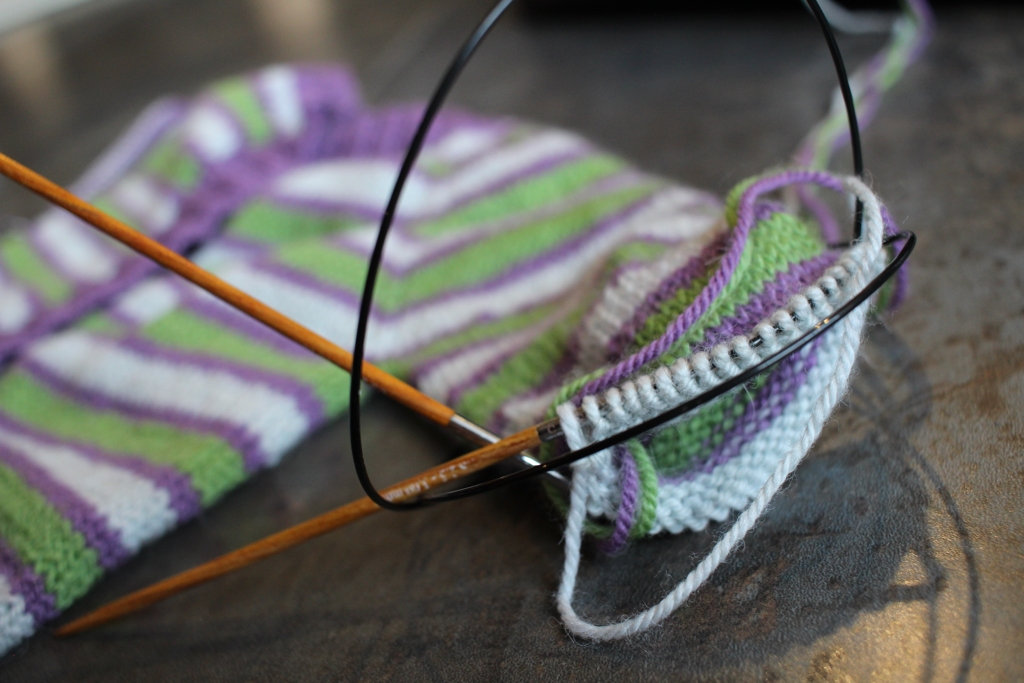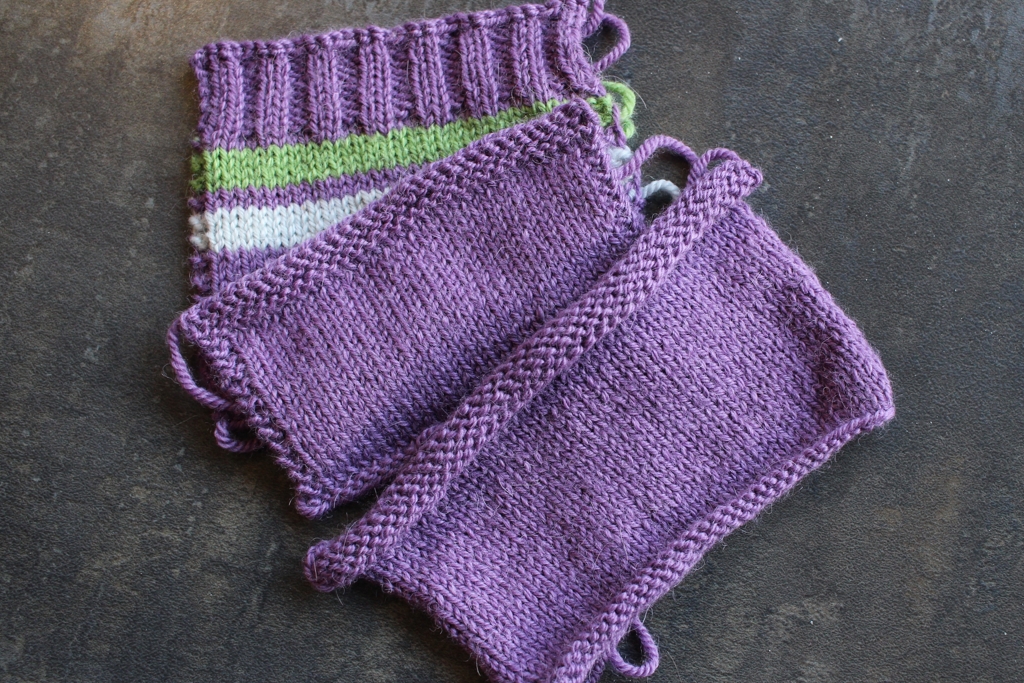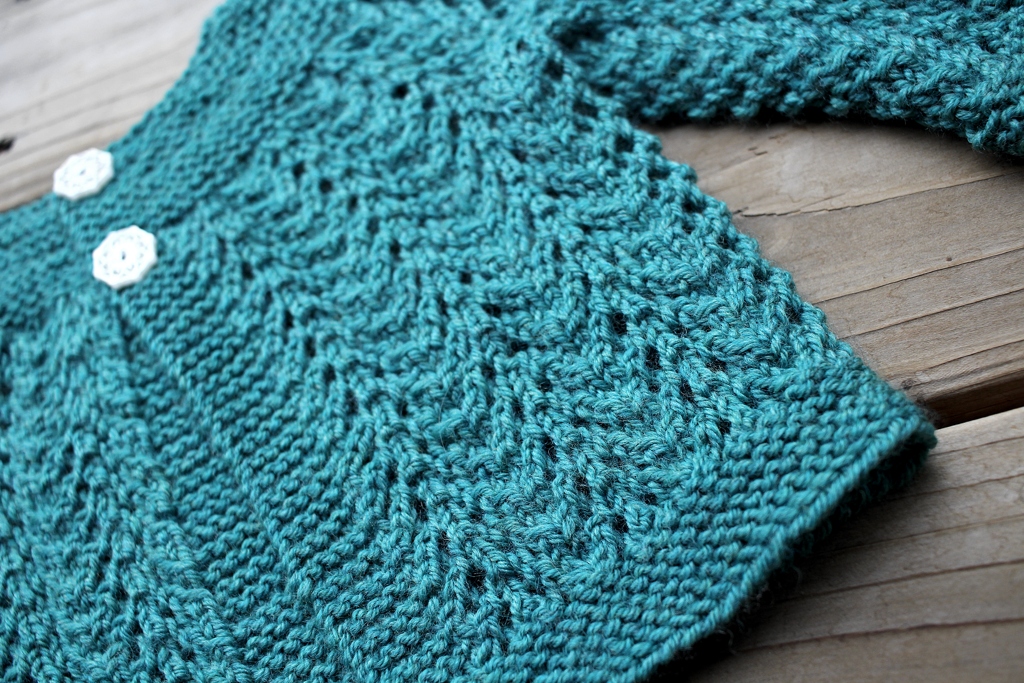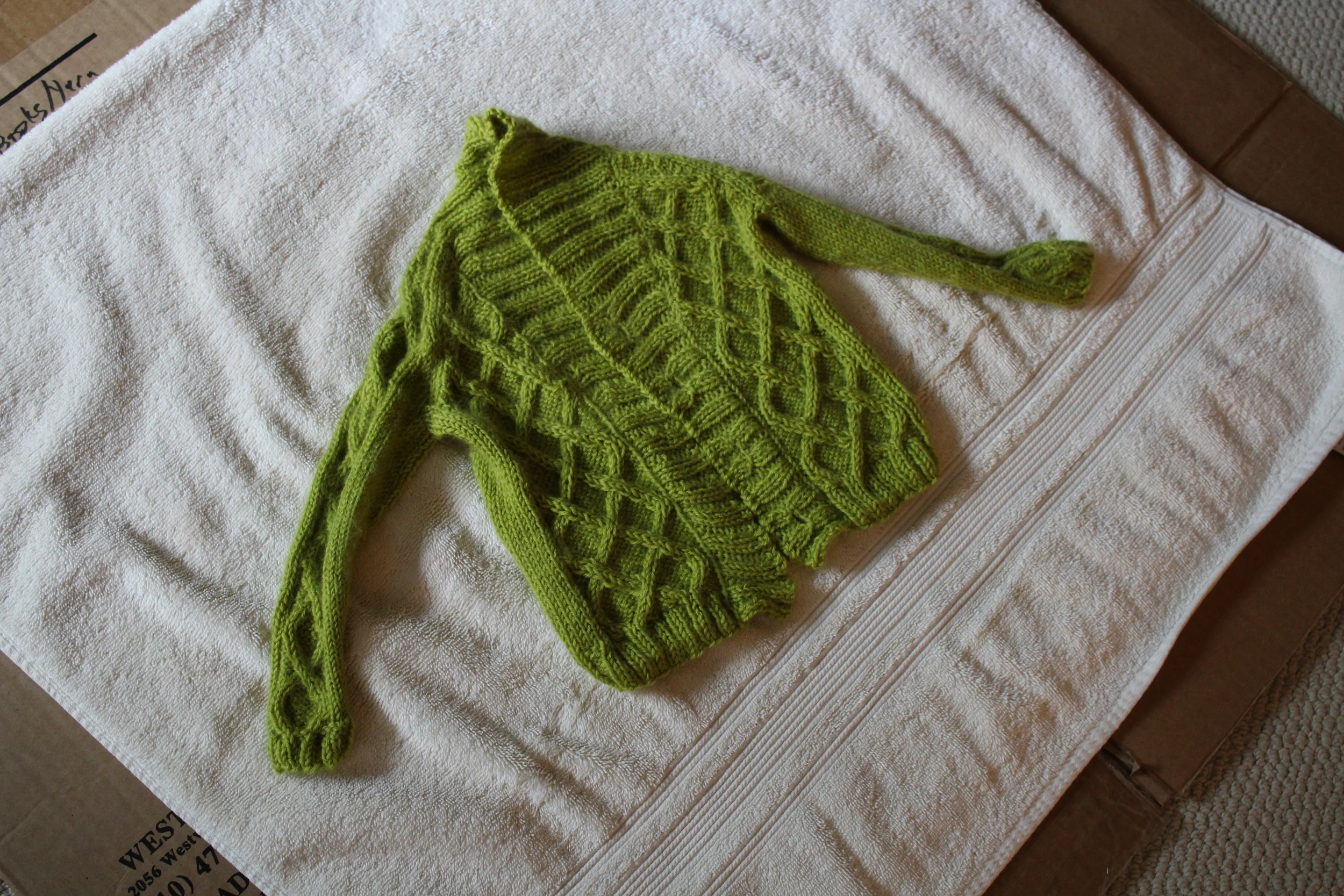FO: The Cassidy Sweater
/There are a lot of things I love about this sweater. I love that I knit it from stash yarn in a dark green that I wear all the time. I love that it was a big, yet portable project that I could work on in the car or on the couch. I love the neat rolled edge detail at the cast-on and bind-off edges. I love that my guesses about how the sweater would grow after blocking were spot on. I love the heavily modified sleeves that are just the right amount of long (and actually fit). I love the curved hem, even though I’d like it to be a little deeper.
What I especially love is that, on only the second sweater I’ve made for myself, I was able to mash up different sizes to make something that fits me. It’s the right length. Both the shoulders and the sleeves fit which is more than I can say for most of the commercial shirts and sweaters I’ve tried. Just that last part is enough for a chef’s kiss. I’m especially proud of the sleeves because I basically eye-balled and tried them on to get the right fit after completely ditching the tapered sleeve shape that seems to be the default of many sweater patterns.
The only modification which didn’t really turn out was shrinking the body circumference. I did it gradually with one decrease row every inch for 4 inches. The body did drop down to the smaller size, but there’s still a lot of extra fabric hiding under the arms. I don’t quite look like a flying squirrel when I wear it, but I kinda do. It’s a good thing that I wanted this sweater mainly for puttering around the house and being cosy. Next time I need to mash up bigger shoulders with a smaller body in the same sweater (which is basically every sweater I make for myself from now on), I’ll work the decreases over a much shorter length.
On the whole, I’m really happy with this sweater. It fits well and will help me make even better fitting sweater next time. Plus, it’ll keep me warm and cosy on the snowy and rainy days of this not-quite spring weather.
Pattern: Cassidy by Maria Leigh (Ravelry Link)
Yarn: Mystery Aran Weight Stash Yarn - 515 g (about 1,150 yds)
Needles: US 7 (4.5 mm) circulars
Dates: November 12, 2020 - February 1, 2022

